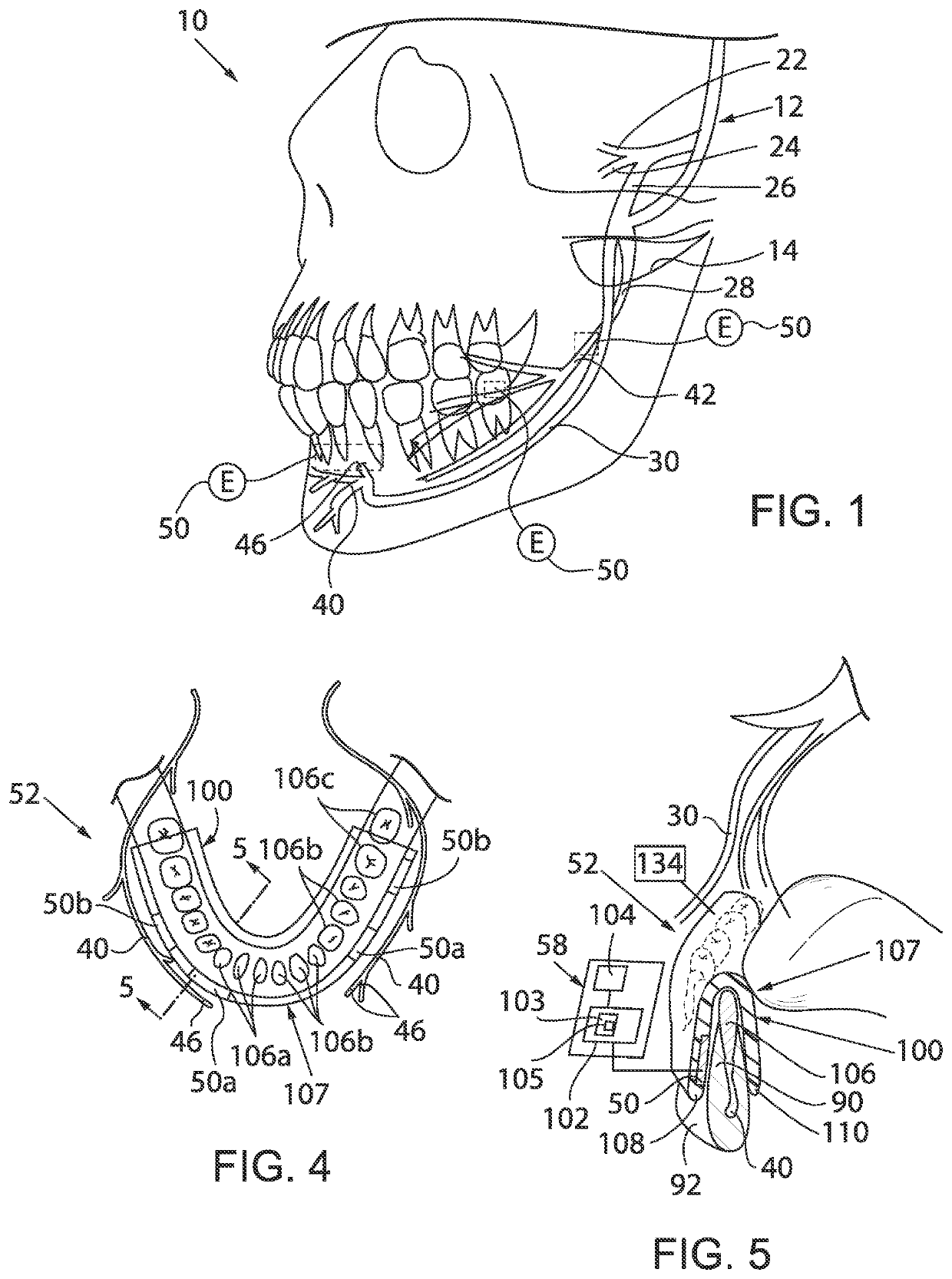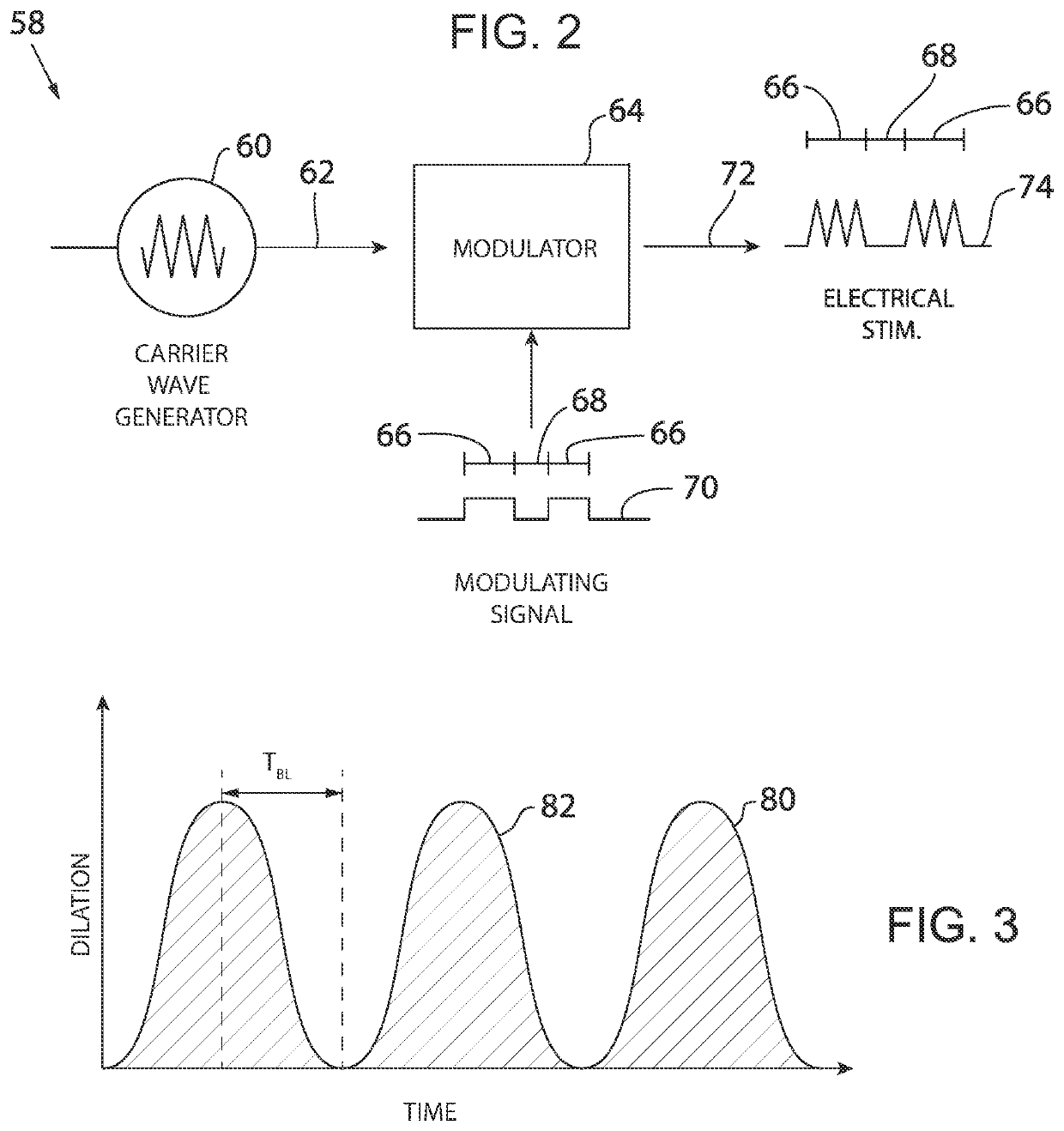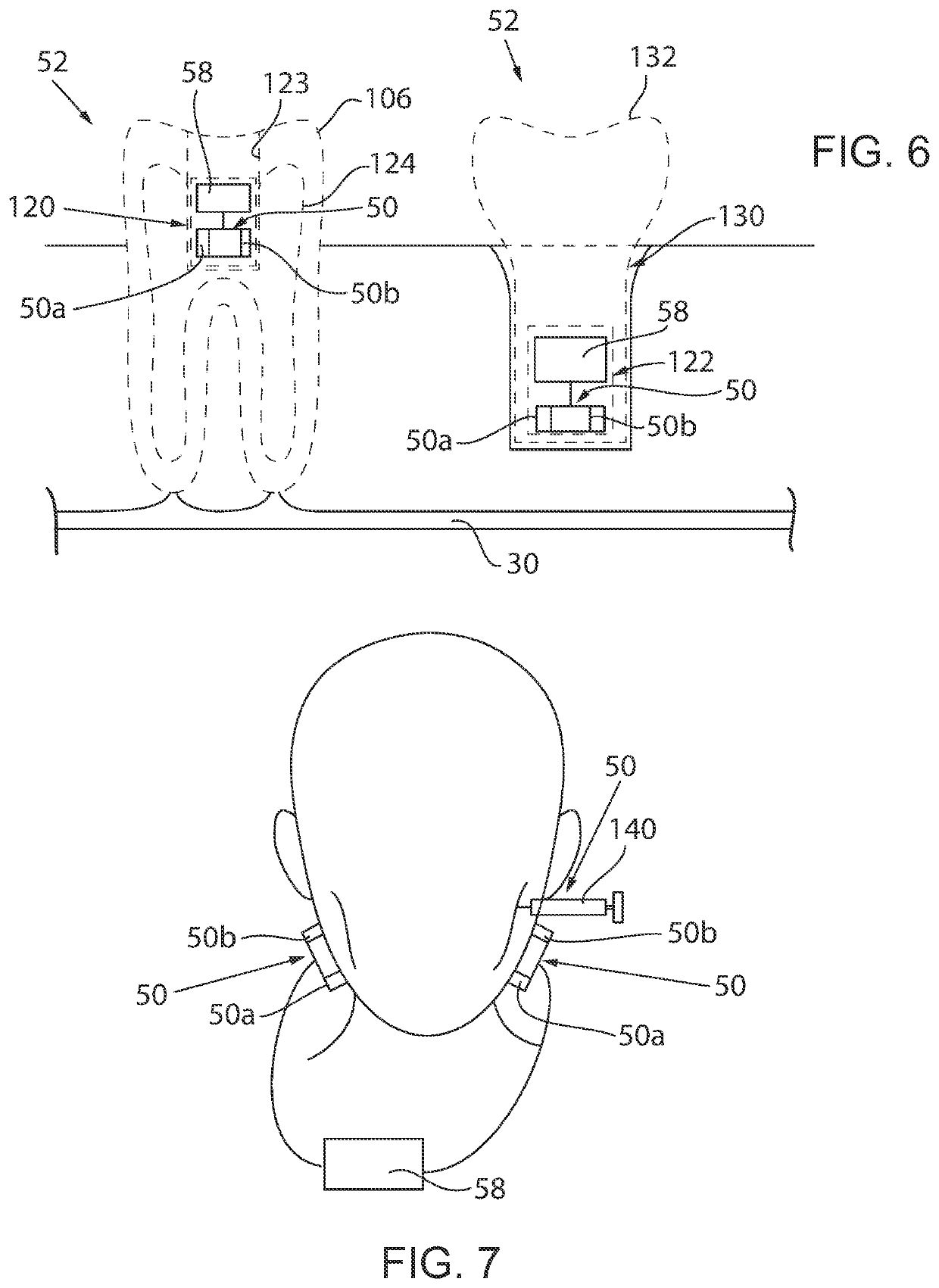Penetration of cerebral spinal fluid into the brain parenchyma using temporally patterned neuromodulation
a technology of cerebral spinal fluid and temporal pattern, applied in the direction of therapy, physical therapy, artificial respiration, etc., can solve the problem of limited methods
- Summary
- Abstract
- Description
- Claims
- Application Information
AI Technical Summary
Benefits of technology
Problems solved by technology
Method used
Image
Examples
example 1
Facial Nerves, Trigeminal Nerves, and Sphenopalatine Ganglia
[0063]Referring to FIG. 8, the carrier wave 62 may be a single frequency waveform (e.g. a sine wave) with the frequency of the carrier wave 62 less than 75 hertz, and between 20 hertz and 60 hertz and preferably between 25 hertz and 55 hertz, with the preferred range centered around 50 hertz. At higher frequencies (75 Hz or above), habituation occurs before peak flow change is obtained, causing a weaker effective pulse.
[0064]In some embodiments, the modulating signal 70 of the modulator 64 may be a single frequency, monophasic signal such as a sine wave creating “bursts” of electrical stimulation. The frequency of the modulating signal 70 is preferably between 0.5 hertz and 0.1 hertz. The modulating signal 70 may provide electrical stimulation 72 with electrical pulses 74 having a time duration 66 between 1 second and 10 seconds, and preferably 5 seconds, and pulse intervals 68 between 1 second and 10 seconds, and preferabl...
example 2
Vagus Nerve, Carotid Sinus Nerve, and Baroreceptor
[0067]Changes in cerebral vasculature blood flow driven by stimulation of baroreflex inputs such as the vagus nerve, aortic depressor nerve, carotid sinus nerve, and carotid sinus bulb / aortic arch are not driven by direct connection to the cerebral vasculature. Instead, they dilate the peripheral arteries through activation of the baroreflex pathway, and the cerebral vessels then react to maintain constant perfusion in the brain. As this response is indirect it has a slower time constant for temporal patterning. Stimulation must be maintained longer to cause this indirect effect on cerebral vasculature, and the habituation period is driven by the entire system finding a new set point for homeostasis. The longer rest period is needed to allow the neural inputs indirectly governing the peripheral vasculature response to recover.
[0068]Referring to FIG. 9, the carrier wave 62 may be a single frequency waveform (e.g. a sine wave) where th...
example 3
Sciatic Nerve and Peripheral Nerve
[0071]The mechanism by which peripheral nerves influence blood flow in the cerebral vasculature blood flow that are not mediated by the baroreflex is by increasing activity in specific regions of the brain. This increase in brain activity increases metabolic demand in these areas, and the vasculature of the brain compensates to increase supply, known as neurovascular coupling. Consequently, the temporal patterning needed to optimize pulsatility of the cerebral vasculature is slower than described for facial / trigeminal nerves that directly dilate cerevasculature or for baroreflex mediated response. This creates the smallest increase in pulsatility of the neural input options described. However, as neural inputs such as the sciatic are superficial, they are often easier to engage with non-invasive or minimally invasive surgical strategies. There is a delay for the blood flow to respond to the increased metabolic demand, and the rest period is necessar...
PUM
 Login to View More
Login to View More Abstract
Description
Claims
Application Information
 Login to View More
Login to View More - R&D
- Intellectual Property
- Life Sciences
- Materials
- Tech Scout
- Unparalleled Data Quality
- Higher Quality Content
- 60% Fewer Hallucinations
Browse by: Latest US Patents, China's latest patents, Technical Efficacy Thesaurus, Application Domain, Technology Topic, Popular Technical Reports.
© 2025 PatSnap. All rights reserved.Legal|Privacy policy|Modern Slavery Act Transparency Statement|Sitemap|About US| Contact US: help@patsnap.com



